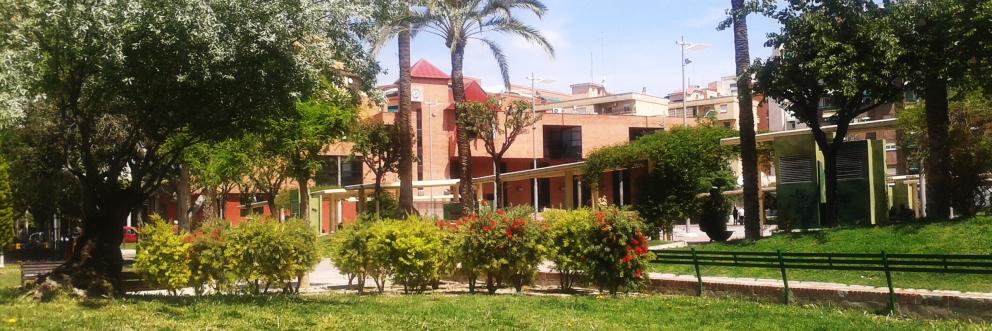
Improvement of mobility flows, intramodality and environmental parameters (air quality and noise)
Motivation

Murcia is going to launch in the first quarter of 2021 a pilot project consisting of 500 e-kick scooters and 250 e-bikes (both free-floating) with the aim of providing new sustainable urban mobility options to its citizens complementing the existing mobility offer at the same time. In addition, it is expected that it will serve to reduce dependence on private cars, improve air quality and reduce noise in the Murcia city center.
These vehicles will be full time monitored (via GPS) and will generate a large amount of data that could be exploited for the benefit of the city. For example, it would allow us to know which routes are the most used by these vehicles, whether they circulate on the existing bike lanes or not, their average speed, origins and destinations, etc.
By properly analysing these data, we could find out in which areas of the city it would be necessary to increase the availability of this type of vehicles, where it would be convenient to establish park spaces for micro-mobility vehicles and how to improve intramodality by connecting them with other urban mobility services such as the public bus, the tram and the new Tranvibus (electric BRT) service. By measuring noise levels and air quality at different strategic spots in Murcia, it will be possible to find out what the positive impact of this type of system is and what the environmental benefits of implementing a larger-scale service would be throughout the metropolitan area of Murcia. The information generated by these vehicles and by the air quality and noise sensors would be transferred to the “MiMurcia” city platform and made available at the Smart City control and monitoring center (CEUS) to integrate it with the rest of the data sets that the city is continuously generating. Within the metropolitan area of Murcia, the Municipality of Molina de Segura has a prominent role because it represents a large population center (70,920 inhabitants) and a significant part of its population commute daily to work in Murcia. The connection between the urban center of Murcia and Molina de Segura has always been scarce, now with the implementation of the “Murcia Metropolitan Mobility Plan” it will be substantially improved thanks to the launch of the Tranvibus (electric BRT) that will link both towns with intelligent and 100% electric vehicles. It would be very interesting to be able to measure the positive impact of the implementation of the Tranvibus throughout its route (Molina de Segura- Murcia) in terms of improving air quality and reducing noise to justify its expansion in order to connect the the Murcia city center with other neighbouring municipalities with significant connection needs . It is also interesting to measure how traffic improves thanks to this public transport and intermodally improvement through the analysis of traffic flows using specific control and monitoring cameras.
Data Sets description

The data available for the project will come from the set of parameters the smart vehicles of the mentioned pilot project (electric scooters and electric bikes) are capable to collect: routes, speed, number of uses, distance travelled per user, among many others. Besides, the city is about deploying 25km of fibre in order to connect 316 sensors in 27 spots to monitor many different parameters across the Municipality. Some of the most relevant data to collect for this “use case” will be air quality and noise, nevertheless it would be very interesting to use image analysis software to get valuable information out of the new traffic cameras that are being installed. Molina de Segura will make use of their traffic monitoring cameras (OpenVIF) in order to provide information about traffic and enable vehicle counting. It will also be available datasets about flows of people, air quality and noise. Murcia will make use of the network of sensors deployed within the MiMurcia project (those related to air quality and noise out of the 316 in total) to collect data in the surroundings of the Tranvibus coverage area in order to assess its impact.
European Data Portal relevance

Basic air and noise pollution data should be used. Besides some relevant dataset for the project have been identified in the European data portal such as:
- “Parking spaces for scooters (Plateforme ouverte des données publiques françaises)”
- “Car Sharing, Bike Sharing, Scooter (dati.gov.it)”
- “Tram noise mapping day LDEN (GDI-DE)”
- “Air Quality Monitoring Station Data - Air Quality Station 2 Salterhebble, Halifax”.4
Required mobility services

A shared mobility service to connect Molina de Segura and Murcia with Tranvibus and electric free floating (e-kick scooters and e-bikes) considering environmental parameters.
Current use of Context Broker
CEF Context broker is used nowadays to collect the data from a wide network of environmental / air quality sensors in Molina de Segura, integration of the ITS metadata via onvif protocol and it is being extended to support other relevant digital signalling and city information via GIS integration at the same time that adapted during COVID to crowd-monitoring (people affluence); at the same time Murcia with the solution MiMurcia powered by FIWARE (CEF Context Broker) has a full integration of the parking location for electric vehicles (https://opendata.hopu.eu/grafana/d/ZqddE4Biz/parking-murcia), air quality monitoring, public transport status and it is integrating the new information about the metropolitan mobility, eBikes, eScooters, tranvibus and buses.